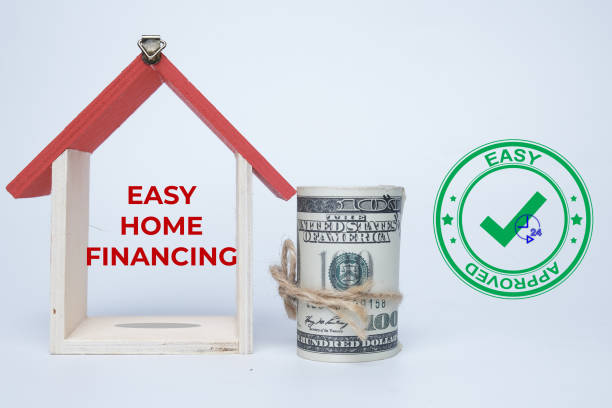Choosing the right mortgage can be challenging, especially with so many options available. Two of the most popular types of home loans are Federal Housing Administration (FHA) loans and conventional mortgages. Both have their unique advantages and are suited to different financial situations. Understanding the differences between FHA and conventional loans can help you make an informed choice that best meets your needs and long-term financial goals. Here’s a comprehensive comparison of FHA and conventional mortgages to help you decide which option is right for you.
1. What is an FHA Loan?
An FHA loan is a type of mortgage insured by the Federal Housing Administration. Designed primarily for first-time and low-to-moderate-income buyers, FHA loans make homeownership more accessible by offering more lenient credit requirements and lower down payments. Because the loan is insured by the government, lenders are more willing to work with borrowers who might not meet the stricter requirements for conventional loans.
Key Features of FHA Loans
- Lower Down Payment Requirements: FHA loans allow for down payments as low as 3.5% for borrowers with a credit score of 580 or higher. Those with credit scores between 500 and 579 may still qualify but need a down payment of at least 10%.
- Flexible Credit Requirements: FHA loans are often easier to qualify for, even if you have a lower credit score or a limited credit history.
- Mortgage Insurance Premiums (MIP): FHA loans require an upfront mortgage insurance premium as well as an ongoing annual MIP, which is added to the monthly payments.
- Loan Limits: FHA loans have limits that vary by region, so the amount you can borrow depends on the median home prices in your area.
2. What is a Conventional Loan?
A conventional loan is a mortgage that isn’t insured or backed by the government. Conventional loans are available through private lenders, such as banks, credit unions, and mortgage companies, and they typically require a stronger credit profile than FHA loans. Conventional loans come in two main types: conforming and non-conforming, with conforming loans adhering to the loan limits set by Fannie Mae and Freddie Mac.
Key Features of Conventional Loans
- Down Payment Flexibility: While the traditional down payment requirement for a conventional loan was 20%, many lenders now offer options with as little as 3% down, particularly for first-time homebuyers.
- Private Mortgage Insurance (PMI): If you put less than 20% down, you’ll likely need to pay for PMI until you reach 20% equity in the home, at which point you can usually cancel it.
- Higher Credit Standards: Conventional loans generally require a higher credit score (usually around 620 or higher) and a lower debt-to-income (DTI) ratio.
- No Government Insurance: Conventional loans don’t carry government insurance, so lenders view them as riskier. This is why they require higher credit scores and may come with higher interest rates for those with lower credit profiles.
3. FHA vs. Conventional Loans: Key Differences
Here’s a side-by-side comparison of FHA and conventional loans to give you a clearer picture of which one might suit your situation better:
| Feature | FHA Loan | Conventional Loan |
|---|---|---|
| Minimum Down Payment | 3.5% (with 580+ credit score) | As low as 3%, typically 5-20% |
| Credit Score Requirement | 500-579 with 10% down, 580+ with 3.5% down | Generally 620+ |
| Mortgage Insurance | Required (Upfront and Annual MIP) | PMI required if < 20% down, cancellable |
| Loan Limits | Set by FHA, varies by area | Conforming limits set by Fannie & Freddie |
| Qualification Flexibility | More flexible on credit and income | Higher credit and income standards |
| Ideal for | First-time buyers, lower credit scores | Strong credit scores, larger down payments |
4. Advantages and Disadvantages of FHA Loans
Advantages
- Lower Credit Barriers: FHA loans are accessible to borrowers with lower credit scores, making homeownership more achievable for those rebuilding credit or lacking credit history.
- Low Down Payment: A 3.5% down payment is relatively affordable, especially for first-time buyers who may not have substantial savings.
- Lenient Debt-to-Income Ratios: FHA loans often allow for a higher DTI ratio, which is beneficial for borrowers with moderate debt.
Disadvantages
- Mortgage Insurance Costs: FHA loans require both an upfront mortgage insurance premium and ongoing annual MIP, which can increase monthly costs.
- Loan Limits: FHA loan limits are set based on regional housing costs, so borrowers in high-cost areas may find the limits restrictive.
- Can’t Cancel MIP: Unlike PMI for conventional loans, MIP on FHA loans lasts for the life of the loan if you put down less than 10%. This could increase long-term costs.
5. Advantages and Disadvantages of Conventional Loans
Advantages
- No MIP Requirement with 20% Down: If you can afford a 20% down payment, conventional loans don’t require mortgage insurance, which can reduce monthly payments.
- PMI Can Be Cancelled: For borrowers with less than 20% down, PMI can typically be canceled once they reach 20% equity, lowering monthly payments over time.
- Higher Loan Limits: Conventional loans often come with higher borrowing limits, which is beneficial for buyers in higher-cost housing markets.
Disadvantages
- Stricter Credit Requirements: Conventional loans generally require higher credit scores, so those with lower scores may not qualify.
- Higher Down Payment for Lower Rates: While some lenders offer as low as 3% down, better rates are often available with larger down payments.
- Less Leniency on DTI: Conventional loans usually have stricter debt-to-income ratio limits, which may make it harder to qualify for those with existing debt.
6. Which Loan is Right for You?
Choosing between an FHA loan and a conventional loan depends on several factors, including your financial situation, credit score, and homebuying goals. Here are some scenarios to consider:
Choose an FHA Loan If:
- You Have a Lower Credit Score: FHA loans are designed to accommodate borrowers with lower credit scores, making it easier for those with credit challenges to qualify.
- You Have Limited Savings for a Down Payment: With just a 3.5% down payment required, FHA loans are ideal for buyers who may not have large cash reserves.
- You’re a First-Time Buyer: FHA loans are especially popular among first-time buyers due to their flexible requirements and affordability.
Choose a Conventional Loan If:
- You Have a Strong Credit Score: If your credit score is above 620, a conventional loan may provide better terms and lower interest rates.
- You Can Afford a Larger Down Payment: With a down payment of 20%, you can avoid PMI altogether, saving on monthly costs.
- You Want to Avoid Long-Term Insurance Costs: PMI on conventional loans can be canceled once you reach 20% equity, whereas FHA MIP often lasts the life of the loan.
Final Thoughts
The decision between an FHA loan and a conventional loan comes down to your financial profile and homebuying priorities. FHA loans offer a pathway to homeownership with lower credit and down payment requirements, but they come with higher long-term insurance costs. Conventional loans require stronger credit and a larger down payment but can save you on insurance costs over time, especially if you reach 20% equity.
Take time to assess your finances, consider your long-term goals, and speak with a mortgage advisor who can help you understand which option aligns best with your situation. With the right choice, you can secure a mortgage that supports both your homeownership dreams and your financial well-being.

